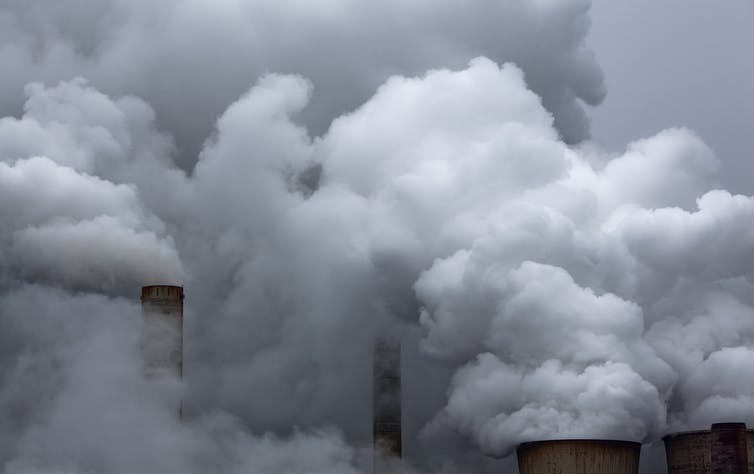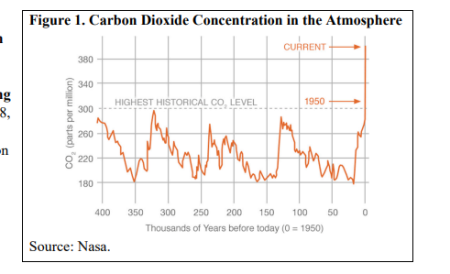There is a new IMF paper out on climate change and what policy instruments are available to do something about it.
Michael Roberts is an Economist in the City of London and prolific blogger
Cross-posted from Michael Roberts Blog

I write this post from Brazil, where the fires in the Amazon rage on and the Bolsonaro government ignores this catastrophe and even welcomes it as a way of clearing the land for more agro production by big domestic and foreign companies. Bolsonaro, Trump and other right-wing ‘populists’ of course deny that there is a problem from global warming and climate change. And I know there are even some on the left in the labour movement who are sceptical at least or outright deniers, seeing it as either mistaken science or a scientific establishment conspiracy for grants and careers.
Well, all I can say to that is that evidence remains overwhelmingly convincing that the earth is heating up to levels not seen in recorded human history; that this global warming is caused by big increases in ‘greenhouse gases’ like carbon dioxide and methane; and that these increases are due to industrialisation and economic growth using fossil fuel energy.
Here is the graph on carbon emissions by NASA as published in the IMF paper.
And as the IMF paper says: “Climate change affects economic outcomes through multiple channels. Rising temperatures, sea-level rises, ocean acidification, shifting rainfall patterns, and extreme events (floods, droughts, heat waves, wildfires) affect the economy along multiple dimensions, including through wealth destruction, reduction and volatility of income and growth (Deryugina and Hsiang 2014, Mersch 2018) and effects on the distribution of income and wealth (IMF 2017, Bathiany et al. 2018, De Laubier-Longuet Marx et al. 2019, Pigato, ed., 2019).”
The IMF goes on:“The broad consensus in the literature is that expected damages caused by unmitigated climate change will be high and the probability of catastrophic tail-risk events is nonnegligible.” And: “There is growing agreement between economists and scientists that the tail risks are material and the risk of catastrophic and irreversible disaster is rising, implying potentially infinite costs of unmitigated climate change, including, in the extreme, human extinction (see, e.g., Weitzman 2009).”
Maybe you might think this is scare-mongering and exaggerated. But what if you are wrong and the ‘tail-end risks’ in the normal distribution of probability are fatter than you think? Can you take the risk that it will all be ok?
So let us assume that the science is right and the consequences are potentially catastrophic to the earth, human living conditions and well-being. What can be done about it, either to mitigate the effects or to stop any further rise in global warming?
Mainstream economics is seeped in complacency. William Nordhaus and Paul Romer won ‘Nobel’ prizes in economics for their contributions to the economic analysis and projections of climate change. Using ‘integrated assessment models’ (IAMs), Nordhaus claimed he could make precise the trade-offs of lower economic growth against lower climate change, as well as making clear the critical importance of the social discount rate and the micro-estimates of the cost of adjustment to climate change. And his results showed that things would not be that bad even if global warming accelerated well beyond current forecasts.
This neoclassical growth accounting approach is fraught with flaws, however. And heterodox economist, Steve Keen, among others, has done an effective debunking job on the Nobel Laureate’s forecasts. “If the predictions of Nordhaus’s Damage Function were true, then everyone—including Climate Change Believers (CCBs)—should just relax. An 8.5 percent fall in GDP is twice as bad as the “Great Recession”, as Americans call the 2008 crisis, which reduced real GDP by 4.2% peak to trough. But that happened in just under two years, so the annual decline in GDP was a very noticeable 2%. The 8.5% decline that Nordhaus predicts from a 6 degree increase in average global temperature (here CCDs will have to pretend that AGW is real) would take 130 years if nothing were done to attenuate Climate Change, according to Nordhaus’s model (see Figure 1). Spread over more than a century, that 8.5% fall would mean a decline in GDP growth of less than 0.1% per year”.
That other Nobel prize winner, Paul Romer, is also a ‘climate optimist’. The founder of so-called ‘endogenous growth’ ie growth leads to more inventions and more inventions lead to more growth in a harmonious capitalist way, Romer reckons that ensuring faster growth will deliver innovatory solutions for stopping global warming and climate change. Romer advocates setting up ’charter cities’ in the third world where enclaves in an existing country are handed over to another more stable and successful nation that would accelerate growth through innovation. His favourite model for this was Hong Kong!
The IMF paper notes with sadness that ‘market solutions’ to mitigating global warming are not working. That’s because companies and countries hope that somebody else will fix the problem and they don’t need to spend anything on it; or that companies and states never think long term and are only interested in what will happen in one, three of five years ahead, not fifty or a century. But above all, market solutions are not working because for capitalist companies it is just not profitable to invest in climate change mitigation: “Private investment in productive capital and infrastructure faces high upfront costs and significant uncertainties that cannot always be priced. Investments for the transition to a low-carbon economy are additionally exposed to important political risks, illiquidity and uncertain returns, depending on policy approaches to mitigation as well as unpredictable technological advances.”
Indeed: “The large gap between the private and social returns on low-carbon investments is likely to persist into the future, as future paths for carbon taxation and carbon pricing are highly uncertain, not least for political economy reasons. This means that there is not only a missing market for current climate mitigation as carbon emissions are currently not priced, but also missing markets for future mitigation, which is relevant for the returns to private investment in future climate mitigation technology, infrastructure and capital.” In other words, it ain’t profitable to do anything significant.
The IMF then lists various measures of monetary and fiscal policy by governments that might be used to mitigate climate change. They boil down to credit incentives to companies, or issuing ‘green bonds’ to try and fund climate change mitigation projects. Then it considers what fiscal policies might be applied ie government investment in green projects or taxes on carbon emissions etc.
What does the IMF conclude on the efficacy of these policies: “Adding climate change mitigation as a goal in macroeconomic policy gives rise to questions about policy assignment and interactions with other policy goals such as financial stability, business cycle stabilization, and price stability. Political economy considerations complicate these questions. The literature does not provide answers yet.” In other words, they see so many complications in using traditional policy tools within the framework of the capitalist mode of production for profit, that they don’t have any answers. In effect, how can the threat of disasters be averted if capitalist accumulation for profit must continue?
Now some on the left argue that the answer is to end the ‘growth mentality’ in capitalism. Just ploughing on producing blindly and wastefully more will ensure disaster. This is the ‘no-growth’ option. And it is undoubtedly true that when economies accelerate in growth and industrial output, based on fossil fuel energy, then carbon emissions also rise inexorably. Jose Tapia, a Marxist economist in the US, has produced firm empirical evidence of the correlation between economic growth and carbon emissions. Indeed, whenever there is a recession as in 2008-9, carbon emission growth falls.
Tapia points out that “the evolution of CO2 emissions and the economy in the past half century leaves no room to doubt that emissions are directly connected with economic growth. The only periods in which the greenhouse emissions that are destroying the stability of the Earth climate have declined have been the years in which the world economy has ceased growing and has contracted, i.e., during economic crises. From the point of view of climate change, economic crises are a blessing, while economic prosperity is a scourge.” Inexorable march toward utter climate disaster [f] (1)
There is an extensive literature arguing for this no growth option to be adopted by the labour movement and socialists globally. But is no growth the answer, when there are three billion people in dire poverty and when even in the more advanced capitalist economies, stagnating economies would mean falling living standards and worse lives for the rest? Instead, can we not mitigate climate change and environmental disasters, and even reverse the process through ending the capitalist mode of production? Then under democratic global planning of the commonly owned resources of the world, we can phase out fossil fuel energy and still expand production to meet the needs of the many. Is this utopian or a practical possibility?
I won’t spell out how that can be done because I think that Richard Smith has expounded how in a series of comprehensive articles. As he says, what we need is not ‘no growth’ but ‘eco-socialism’. It is not a choice between global warming and ‘no growth’ recession and depression for billions; but between capitalist production disaster or socialist planning. Green capitalism won’t work, as the IMF paper hints at, and a Green New Deal won’t be enough if the capitalist mode of production for profit still dominates. But under democratic planning we can control unnecessary consumption and return resources to the environment in a way to keep the planet, human beings and nature as balanced as possible. We can “innovate”, create new things, but still balance our ecological inputs and outputs. It’s a practical possibility, but time is running out.



Be the first to comment